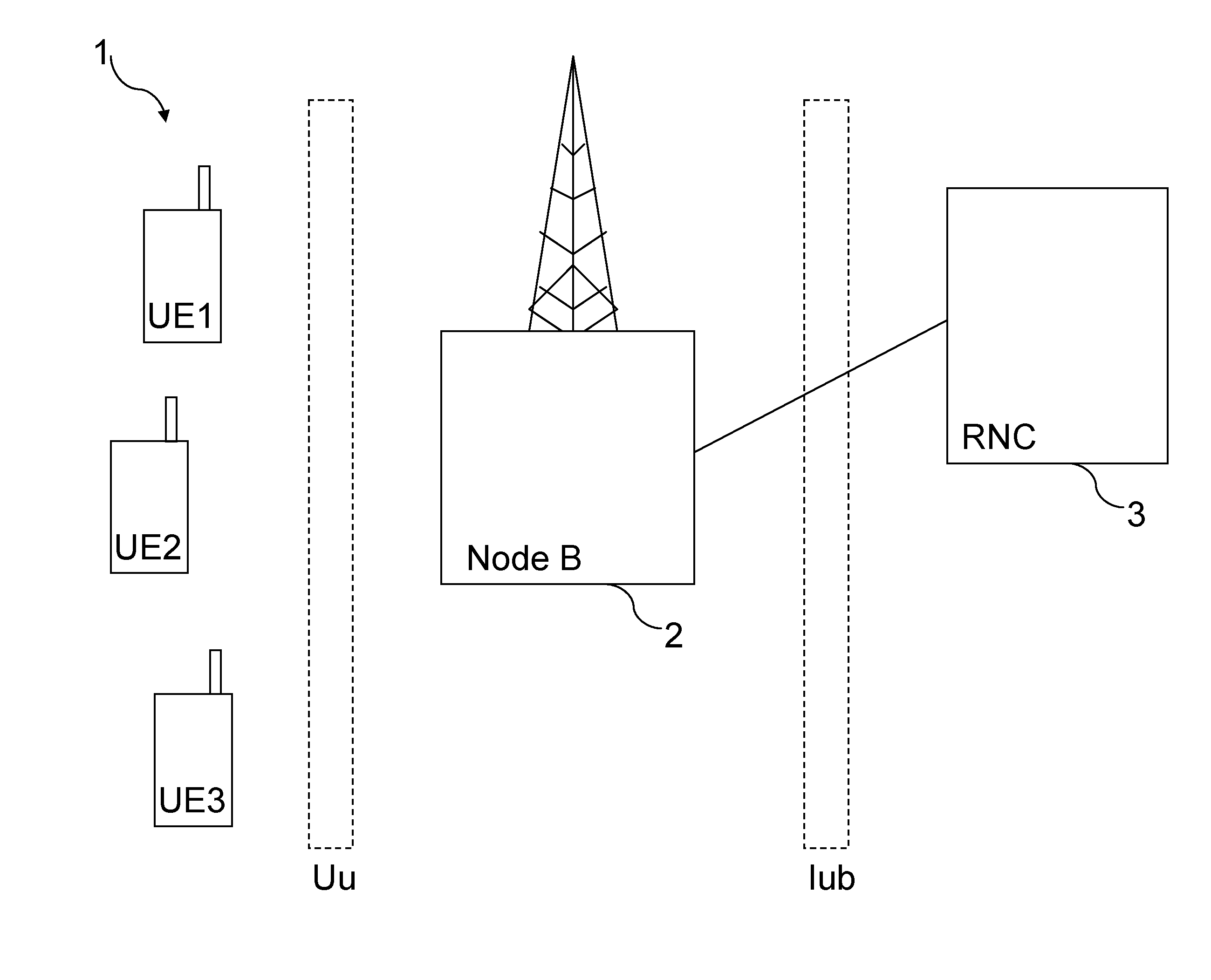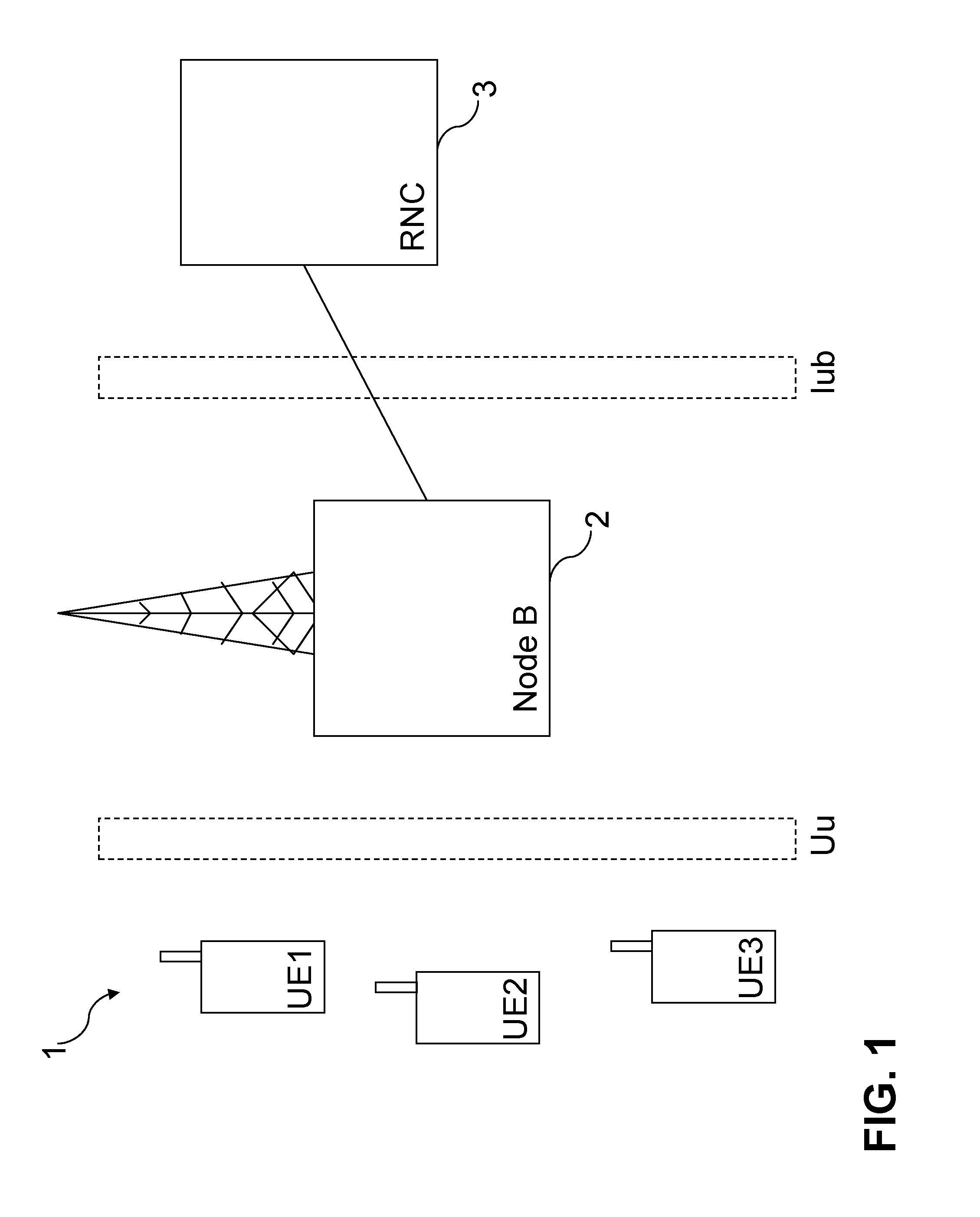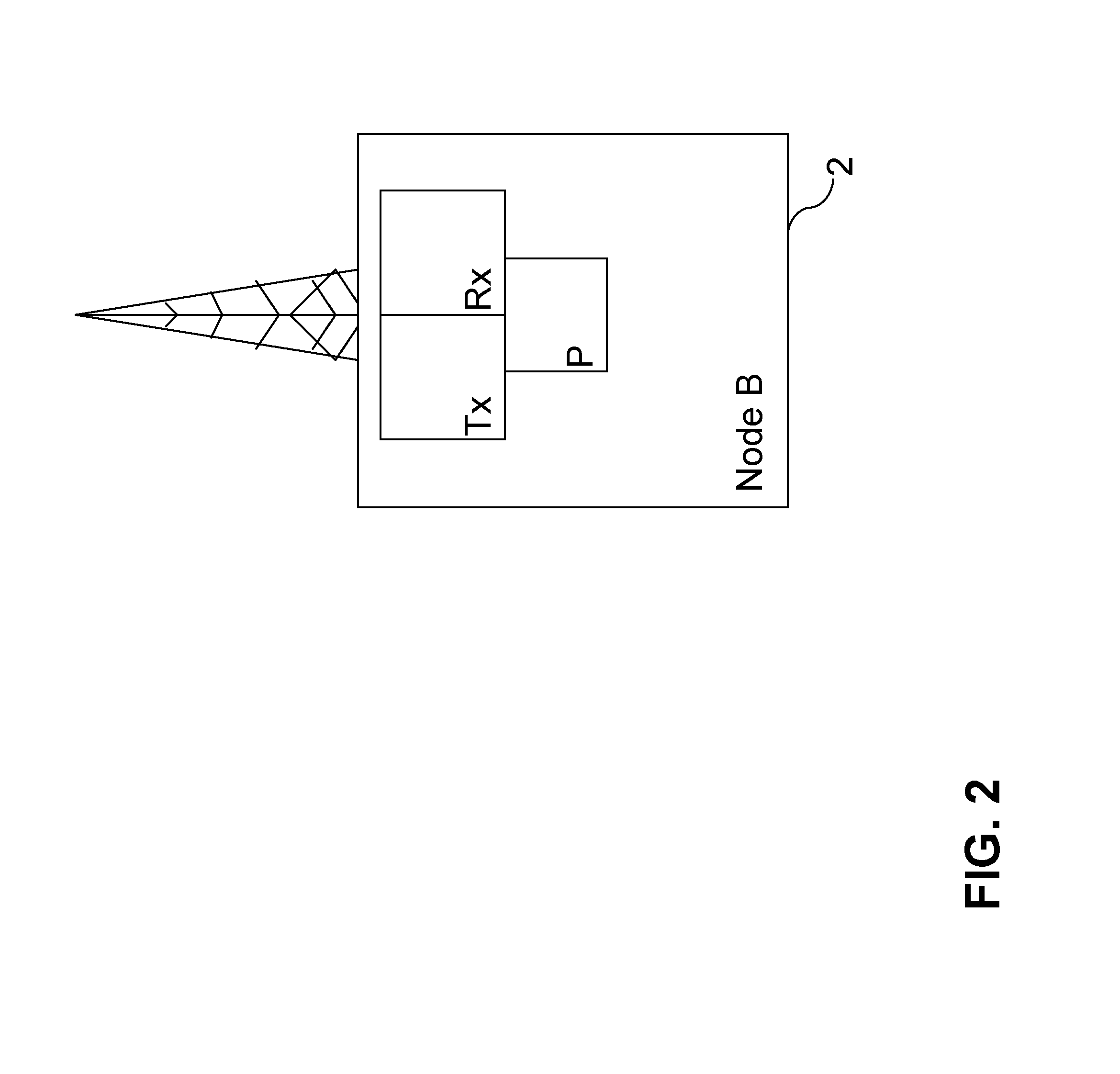Channelization Code Sharing Between Multiple Users
a channelization and code sharing technology, applied in the field of data exchange in a communications network, can solve the problem that hspa cannot reduce the resulting latency/delay, and achieve the effect of reducing the amount of memory required and the memory and buffer size of the mobile station
- Summary
- Abstract
- Description
- Claims
- Application Information
AI Technical Summary
Benefits of technology
Problems solved by technology
Method used
Image
Examples
first embodiment
[0040]In the invention, during downlink data transmission in the network, the processor P in the NodeB 2 selects whether to allocate more than one user during 2 ms TTI. In case more than one user is to be allocated, the processor P in the Node B 2 selects the channelization code of the HS-SCCH control channel C1, C2 or C3 to be used for each UE UE1, UE2 and UE3, respectively, using time division multiplexing (TDMA) and code division multiplexing (CDMA) such that the channelization code used for the HS-SCCH control channel C1, C2 or C3 is shared between the UEs UE1, UE2 and UE3 in a TDMA fashion and also in a CDMA fashion over the TTI and corresponds to the part of the 2 ms frame to be allocated to a particular UE UE1, UE2 or UE3 (and to be received by the UE at its receiver R1).
[0041]In other words, the channelization codes C1, C2 or C3 of the control channel are “mapped” to a respective UE UE1, UE2 or UE3, and the channelization codes on the HS-SCCH control channel are time multipl...
second embodiment
[0048]FIGS. 7 and 8 are schematic block diagrams of the channel structure used in the method according to the invention. A flow chart illustrating the method shown in FIGS. 7 and 8 is shown in FIG. 9. The HS-PDSCH carries user data and the HS-SCCH is a fixed data rate control channel carrying channelization code information necessary for HS-PDSCH demodulation by the UE UE1, UE2, UE3. All the UEs UE1, UE2 and UE3 are configured in MIMO mode.
[0049]In the second embodiment of the invention, during downlink data transmission in the network, the processor P in the NodeB 2 selects whether to allocate more than one user during 2 ms TTI. In case more than one user is to be allocated, the processor P in the Node B 2 selects the channelization code of the HS-SCCH control channel C1, C2 or C3 to be used for each UE UE1, UE2 and UE3, respectively, using time division multiplexing (TDMA) (Step S11) such that the channelization code used for the HS-SCCH control channel C1, C2 or C3 corresponds to...
PUM
 Login to View More
Login to View More Abstract
Description
Claims
Application Information
 Login to View More
Login to View More - R&D
- Intellectual Property
- Life Sciences
- Materials
- Tech Scout
- Unparalleled Data Quality
- Higher Quality Content
- 60% Fewer Hallucinations
Browse by: Latest US Patents, China's latest patents, Technical Efficacy Thesaurus, Application Domain, Technology Topic, Popular Technical Reports.
© 2025 PatSnap. All rights reserved.Legal|Privacy policy|Modern Slavery Act Transparency Statement|Sitemap|About US| Contact US: help@patsnap.com



